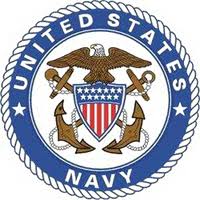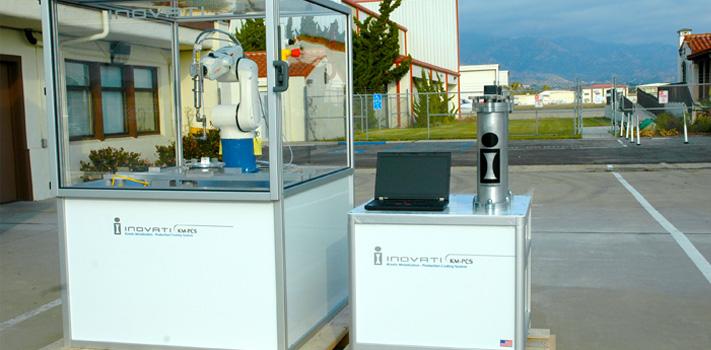 The United States Navy is a massive military organization that requires a tremendous amount of money and personnel to keep operating at peak efficiency. Currently it is the largest naval force in the world and operates ten massive aircraft carriers, almost three hundred combat ships and vessels and almost four thousand aircraft. This fleet is maintained by over three hundred thousand service personnel on active duty, with another one hundred thousand serving as reserve. In order to keep an organization of that size running, a tremendous amount of money and surplus equipment must be kept in reserve to replace or stand in for any damaged equipment while repairs are being made.
The United States Navy is a massive military organization that requires a tremendous amount of money and personnel to keep operating at peak efficiency. Currently it is the largest naval force in the world and operates ten massive aircraft carriers, almost three hundred combat ships and vessels and almost four thousand aircraft. This fleet is maintained by over three hundred thousand service personnel on active duty, with another one hundred thousand serving as reserve. In order to keep an organization of that size running, a tremendous amount of money and surplus equipment must be kept in reserve to replace or stand in for any damaged equipment while repairs are being made.
And the US Navy is just one of the seven branches of the US armed services, so with numbers like that it’s no wonder that the US spends so much of its budget on the military. And as the United States’ budget continues to grow along with its population, more scrutiny is being placed on the amount of money being spent by its armed forces. Several branches are starting to see additive manufacturing as potential cost saving applications that can both speed up vehicle maintenance and reduce the overall cost in time and money spent on repairs. Many are actively looking to incorporate 3D printing technology into the maintenance workflow.
 Southern California additive manufacturing technology developer Inovati is looking to take advantage of the military’s new interest in 3D printing by offering their Kinetic Metallization process as an alternative for the spot-repair of military aircraft parts. Many of the large components that wear and need to be replaced on naval vehicles can cost upwards of hundreds of thousands of dollars. When large components need to be replaced, the time taken to order a replacement part and install it on a vehicle can often keep the equipment out of operation for weeks, months or even years at a time.
Southern California additive manufacturing technology developer Inovati is looking to take advantage of the military’s new interest in 3D printing by offering their Kinetic Metallization process as an alternative for the spot-repair of military aircraft parts. Many of the large components that wear and need to be replaced on naval vehicles can cost upwards of hundreds of thousands of dollars. When large components need to be replaced, the time taken to order a replacement part and install it on a vehicle can often keep the equipment out of operation for weeks, months or even years at a time.
 The Kinetic Metallization process developed by Inovati could replace the need for new parts almost entirely. Many replacements can take up to fifteen months to receive and install, however by repairing the parts the process will only take about two weeks. They believe that this could not only increase the readiness or the US naval fleets of ships and aircraft, but will reduce the number of surplus equipment needed to maintain a high level of readiness. Currently, Inovati has successfully repaired a F-18 component that has logged more than 3,000 hours of flight without showing any differences between the repaired part and a newly machined part.
The Kinetic Metallization process developed by Inovati could replace the need for new parts almost entirely. Many replacements can take up to fifteen months to receive and install, however by repairing the parts the process will only take about two weeks. They believe that this could not only increase the readiness or the US naval fleets of ships and aircraft, but will reduce the number of surplus equipment needed to maintain a high level of readiness. Currently, Inovati has successfully repaired a F-18 component that has logged more than 3,000 hours of flight without showing any differences between the repaired part and a newly machined part.
Inovati’s Kinetic Metallization system includes a specialized cold spray “KM Gun” that accelerates metal micron-scale particles up to speeds to Mach 1 and deposits them on the surface of the damaged part. The powder collides with the part so fast that it causes the material to plastically deform upon impact with the part surface, which will cause a true metallurgical bond with the surface. The superfine (ranging from 1-50 microns in size) metallic powders are made of a combination of metals and ceramics that build up a new surface, layer by layer, that replaces protective coatings or even repairs damage. Excess material on the part is simply machined off, leaving behind a brand new surface identical to the original component. The KM Gun is controlled with a robotic arm capable of seven axes of movement that allows for very precise application of the powdered material with a high-degree of repeatability.
Here is a video of the process:
The parts that Inovati recently successfully repaired using their Kinetic Metallization process were a pair of Super Hornet F-18 AMAD gearbox housings. By repairing the parts rather than replacing them, the Navy saved over $150,000 and 15 month lead time. Inovati has been offering cold spray technology for two decades, and has continually worked to streamline and improve the quality, speed and accuracy of its product. Currently, the Kinetic Metallization process has been used on rocket nozzles, aircraft parts and telecommunications racks. Discuss this story in the Navy 3D Printing forum thread on 3DPB.com.
Subscribe to Our Email Newsletter
Stay up-to-date on all the latest news from the 3D printing industry and receive information and offers from third party vendors.
Print Services
Upload your 3D Models and get them printed quickly and efficiently.
You May Also Like
The Market and Industry Potential of Multi-Material 3D and 4D Printing in Additive Electronics
Additive manufacturing leverages computer-based software to create components for products by depositing either dielectric or conductive materials, layer by layer, into different geometric shapes. Since its birth in the 1980s,...
3DPOD 262: Bio-inspired Design for AM with Dhruv Bhate, Arizona State University
Dhruv Bhate is an associate professor at Arizona State University. There, he looks at structures, materials, and design. Previously, he worked at PADT as well as in the semiconductor and...
3DPOD 261: Tooling and Cooling for AM with Jason Murphy, NXC MFG
Jason Murphy´s NXC MFG (Next Chapter Manufacturing) is not a generalist service; instead, the company specializes in making tooling. Using LPBF and binder jet, the company produces some of the...
3DPOD 260: John Hart on VulcanForms, MIT, Desktop Metal and More
John Hart is a Professor at MIT; he´s also the director of the Laboratory for Manufacturing and Productivity as well as the director of the Center for Advanced Production Technologies....


































